

Agridisk
Egypt - Alexandria

Regenerative farming definition | Fundamentals and Principles & Practices
Description: The fascinating journey into the world of regenerative farming takes us on a path that intertwines the realms of science, environment, and economics. This form of agriculture directly addresses the pressing issue of soil degradation, offering a solution that promises not only to halt the damage, but reverse it and breathe new life into the very earth under our feet. By comprehensively understanding the concepts, the techniques integral to regenerative farming, and their potential environmental implications, one can gain a clearer vision of the crucial role it plays in fostering sustainable agricultural systems. Furthermore, developing awareness about the economic ramifications of this shift can ensure that we keep our feet planted firmly on the ground as we stride towards this promising horizon. Regenerative farming, an emerging concept in the agriculture sector, centers its ethos on potentiating a critical intersection: the relationship between healthy soil, bountiful yield, and climate mitigation. A scientific and organic agriculture system, this farming approach works to increase biodiversity, enrich soils, improve watersheds, and enhance ecosystem services. It aims not just to sustain, but to regenerate the health of our environment. Primarily, regenerative farming seeks to mimic natural processes to foster an environment conducive to self-regulation, resilience, and robustness. The techniques corollary to this practice vary greatly, but all underscore the importance of an organic, systems approach to farming that stands in stark contrast to many conventional agricultural methods. Crop diversity and rotation plays an absolute role in regenerative farming. Relying on a single crop or monocultures, a frequent practice in conventional farming, exposes shortcomings like nutrient-stripping and susceptibility to pests and diseases. In contrast, diversified crop rotations inoculate against such shortcomings by enhancing soil health and promoting biodiversity, thereby catering to an ecology that, by design, fosters resistance to pests and mitigates diseases. Cover cropping, another integral practice in regenerative farming, involves planting certain species during off seasons to protect soil productivity. Cover crops shield soil from erosion, improve soil structure, increase organic matter, and suppress weed growth. Composting has been a long-standing recommendation within regenerative agriculture, promoting microbial diversity within the soil and aiding in its recarbonization. Compost introduces a vast array of beneficial microorganisms, thereby constructing a soil "microbiome." This microbiome breaks down complex molecules and transforms nutrients into forms accessible to plants, thereby improving fertility and soil health. Another principle of regenerative farming is reduced or eliminated tillage. Tillage, a common practice in conventional farming, disrupts soil structure, releases carbon, and exposes soils to erosion. To attenuate these impacts, regenerative farming employs minimal tillage techniques, or opts for no-till farming altogether, thereby preserving soil integrity and organic matter, and sequestering carbon. Lastly, regenerative farming champions the integration of livestock. Animal agriculture, when managed appropriately, can act as a significant change agent for ecosystem health. Grazing animals stimulate plant growth, cycle nutrients back into the soil, and build soil organic matter. In culmination, regenerative farming is more than a mere alternative to conventional agriculture - it reimagines a farming system which functions in concert with nature, rather than in opposition to it. Akin to a symphony, each player, or in this case, farming technique, contributes to a harmonious, resilient, and self-sustaining environment. At its core, regenerative farming is a manifestation of conscientious stewardship and a refined understanding of the rich tapestry of life beneath our feet. It continues to explore the profundity of its impact on our soils, our food systems, and indeed, our planet. The transformative capabilities of regenerative farming have profound implications for diverse ecosystems and the balance of our planet's climate. Regenerative farming inherently counteracts deleterious human impacts while bolstering resilience against weather extremes—an increasingly relevant attribute amidst escalating climate change. Foremost, regenerative farming moderates climate change by augmenting soil's carbon sequestration potential. Organic matter in the soil binds to carbon, preventing its release into the atmosphere as CO2, where it could contribute to greenhouse warming. Simultaneously, oxygen levels are elevated due to enhanced soil aeration, overturning rates of soil erosion, and reducing the release of nitrous oxide, another potent greenhouse gas. Agroforestry, another component of regenerative farming, integrates trees into agricultural landscapes, boosting carbon sequestration even further. Added benefits of agroforestry include enhanced soil health, enriched biodiversity, and augmented farm productivity. The shielding effect of these trees also buffers against the devastating effects of climate extremities such as intense storm events and fluctuating temperatures. Moreover, regenerative farming promotes biodiversity, a critical yet often understated facet of strong ecosystems. Greater species diversity stabilizes ecosystems and strengthens their resilience to disturbances. Regenerative agriculture fosters this biodiversity by diversifying farm production and creating habitats for various species, fostering complex food webs. Holistic pasture management, a crucial practice in regenerative farming, aids in maintaining biodiversity as well. By managing livestock to simulate the behavior of wild herbivores—through techniques such as rotational grazing—regenerative farming sustains a dynamic ecosystem with improved forage production and soil fertility. Whilst the impact of regenerative farming stretches beyond these parameters, it must be mentioned that this approach is not without its challenges. Scaled incorporation of regenerative practices necessitates an overhaul of established systems, requiring significant investment in education, research, and, crucially, policy adjustment. However, given our current trajectory of escalating climate change and biodiversity loss, the potential benefits of a widespread shift to regenerative farming remain unignorable. This holistic approach offers an encouraging avenue towards more sustainable, resilient food systems that favor biodiversity conservation and atmospheric amelioration. Indeed, regenerative farming leverages the symbiosis between agricultural functionality and ecological health, while valiantly addressing two of the most pressing environmental issues of our time. Considering the potential economic benefits that could arise from the large-scale implementation of regenerative farming, several key sectors are likely to experience growth and development. First and foremost, there's an anticipated increase in economic profitability for both small and large-scale farmers. Regenerative practices can enhance the fertility and productivity of farmland over time, resulting in higher crop yields without the need for expensive synthetic fertilizers and pesticides. Therefore, the initial investment in regenerative practices could be offset by reduced input costs and increased output over time. Moreover, the diverse agroecological systems promoted by regenerative farming could also give rise to new market opportunities. The market for organic products, for example, has been on the rise as consumer demand for natural, ethically sourced products continues to increase. Farmers employing regenerative practices would be well-positioned to meet this demand, potentially gaining access to premium markets and higher product prices. In addition, the mitigation of risky weather extremes and climate-induced uncertainties through regenerative farming practices could prove beneficial for agrarian economies. High resilience to climate change is a key economic advantage that should not be understated. As insurance companies and financial bodies take more account of climate-related risk factors, farms that demonstrate climate-resilient practices may also benefit from reduced insurance premiums or more favorable financing conditions. However, the economic challenges of transitioning to regenerative farming on a large scale must be acknowledged. Considering the current agricultural paradigm, farmers seeking to transition towards regenerative farming may encounter substantial financial barriers. Initially, yields may decrease as soils and ecosystems heal and adapt to new methods of management. During this transitional phase, farmers may need significant financial reserves or support to weather the potential dip in incomes. Furthermore, there could be additional costs associated in acquiring and mastering new skills for managing regenerative systems effectively. Education and training would be crucial in this regard, increasing the upfront expenses for farmers. Current subsidy and policy environments also pose a substantial challenge, as they often support conventional, high-input agricultural methods rather than incentivizing sustainable practices. On top of these, there could be economic implications deriving from the need to modify existing infrastructural, technological, and mechanical aspects within large farming systems. A transition to regenerative farming might necessitate a shift from machinery designed for monoculture-based farming to equipment suited for diversified, mixed farming systems. This redesigning and restructuring may demand a substantial financial outlay. Ultimately, the practice of large-scale regenerative farming could be economically promising, resilient, and sustainable if nurtured appropriately and supported by effective, targeted policies. However, the transition poses its challenges and requires significant initial investment, patience, learning, and a supportive policy environment to realize its potential. As such, further research is essential to ascertain the long-term economic implications and potential for large-scale, systemic adoption of regenerative farming practices. Regenerative farming poses an intriguing challenge to our conventional understanding of farming and economics. Rather than focusing on immediate profitability, it bids us to consider a broader definition of success - one that includes health of the soil, resilience of communities, and vitality of ecosystems. Assessing its economic viability, consequently, requires a recalibration of perceived cost-benefits and priorities, not just in farming but in our collective pursuit of a sustainable planet. It asks us to shift from myopic, compartmentalized thinking to an integrated, holistic perspective. Sweeping implementation of regenerative farming may be a Herculean task, but the shift in thinking that it necessitates could be the larger revolution, forming the bedrock to a resilient, abundant, and sustainable world that it promises to sow. Regenerative farming, a sustainable approach to agriculture, holds the promise to be a beacon of change in a world increasingly affected by climate change and environmental degradation. Essentially, regenerative farming aims at rejuvenating the health of our agricultural systems, specifically the soil, by relying on nature-based processes. Factors like cover cropping, crop rotation, and the reduction or elimination of tillage form an integral part of these methodologies. However, the reach of regenerative farming is far more wide-ranging than just the farm itself. It is an approach intricately interconnected with broader ecosystems and communities, leading to remarkable impacts, both ecologically and societally, including biodiversity enhancement, carbon sequestration, elevated food security, and rural community development. Regenerative farming represents a revolutionary method of agriculture which, by definition, seeks to restore the health and vitality of our planet's soil by improving its biodiversity and fertility. Central to this approach is the recognition of soil as a living matrix that thrives when a diverse range of plant and animal life are engaged in a delicately balanced ecological interplay. This perspective diverges profoundly from the conventional approach to agriculture, which often relies heavily on synthetic fertilizers, pesticides, and genetically homogenized crops, all of which deplete the soil of its naturally occurring nutrients and disturbed its ecological balance. The regenerative model acknowledges the intricate mechanisms operating within the ecosystem and aims to promote them, understanding that healthy, fertile soil stands at the core of sustained agricultural productivity. Implementing regenerative farming involves a series of principles and methodologies. Of primary importance is the reduction or complete elimination of tilling - a common farming practice that breaks up soil and facilitates the planting and growth of crops. While tilling can accelerate crop growth in the short term, it ultimately leads to soil degradation by disrupting the delicate balance of life in the soil and exposing it to erosive elements, thus undermining the long-term viability of the land. Additionally, regenerative farming promotes the diversification of crops, as growing a variety of plants can naturally improve soil health and mitigate the infestation of pests. Incorporating livestock into farming practices is also an integral part of the regenerative model. Animals, through their different droppings, contribute to enhancing the fertility of the soil, whilst also reducing dependency on artificial fertilisers, and facilitating the natural symbiosis of animal and plant life. A further crucial aspect of regenerative farming is cover cropping which involves growing specific plants to cover the soil when main crops aren't present. Cover crops serve multiple purposes, from preventing soil erosion and weed growth, to improving the soil structure, increasing its ability to hold water, and attracting beneficial insects that contribute to pest control. Adopting regenerative farming practices presents the potential not only to invigorate agricultural productivity and resilience, but also to address the global environmental challenges we face today, and securing a sustainable, thriving future. By re-evaluating our approach to agriculture and harnessing the intricate mechanisms of nature, we could make a profound difference. The journey towards a regenerative agriculture system underscores the importance of understanding the interconnectedness of nature and the far-reaching implications of our actions on this intricate web of life. Delving deeper into the subject matter, a noteworthy facet of regenerative farming is its implicit contribution to ecological preservation. This progressive agricultural approach has been shown to boost soil fertility and increase biodiversity on farms. By preserving organic matter within the soil, not only is nutrient supply for the plants secured, but this practice also effectively captures and retains carbon within the ground. Thus, it plays a considerable role in mitigating climate change effects by reducing our global carbon footprint. As per numerous studies, approximately 1% increase in organic matter helps in capturing around 20-30 tons of carbon per acre. This method of “carbon farming” symbolizes the transformative potential of regenerative farming in our quest for sustainable ecological preservation. In addition to its tremendous ecological benefits, regenerative farming also harbors potential for profound social equity advancements. By promoting practices that result in healthier soils, the produce yielded is typically more nutrient rich, which correlates to better food security and improved public health outcomes. Moreover, the adoption of regenerative agriculture practices could shift the agricultural labor market in a favorable direction. Jobs associated with regenerative farms often demand a more diverse skill set than conventional ones. Consequently, they provide an avenue for rural employment opportunities that are not only more resilient, but also more fulfilling and rooted in the local community. Furthermore, it decentralizes food systems and hands the power back to small-scale farmers. Through fostering a strong, flourishing local food economy, regenerative farming is thus a crucial element in constructing systems that support social fairness and a more equitable distribution of resources. Despite demonstrated benefits, the widespread implementation of regenerative farming currently faces enduring challenges. One of the major setbacks is the economic constraints facing a transition from conventional agriculture. The initial investment required for infrastructure changes, the acquisition of knowledge, and the costs associated with adopting new techniques can be discouraging to many farmers. Uncertainties regarding profitability and issues with finding suitable markets for regenerative farm products also pose significant challenges. Additionally, existing subsidies and policies often favor conventional agricultural practices, presenting further obstacles to those considering this transition. Technically, the lack of training and awareness regarding regenerative farming methodologies among farmers is another pressing issue. The fact that the practice is knowledge-intensive rather than input-intensive as in conventional farming implies that farmers need to understand the intricacies of the ecosystem they are working with, making training and expert advice crucial assets. Furthermore, a widespread misconception exists that regenerative farming is less productive than its conventional counterpart. Although yields may decrease initially, research indicates that in the long term, these systems can prove to be more productive and resistant to extreme weather conditions caused by climate change. Despite these challenges, the potential future of regenerative agriculture is robust and promising. It carries the potential to not only restore health to our ailing soils but also help sequester significant amounts of carbon from the atmosphere, aiding in the fight against climate change. Beyond these environmental benefits, regenerative farming can provide improvements in farm profitability, labor opportunities, and farmer resilience, while also laying the foundation for a decentralized, equitable, and sustainable food system. With increased awareness, appropriate policy measures, and scientific advancements, the barriers to adoption can be overcome, paving the way for a revolutionary change in the agricultural world. Regenerative farming, despite its significant benefits, is hindered by a cluster of challenges, such as economic impediments, insufficiency of awareness, and policy limitations. Yet, the potential of regenerative farming is vast and unfolding. With technological advancements in the agricultural sector, shifts in policies, and the mounting urgency for sustainable food production, the future looks hopeful. Ultimately, regenerative farming signifies more than just an agricultural practice; it embodies a transformative shift towards a more sustainable and resilient food system. As we move forward, embracing regenerative farming will be pivotal in maintaining the health of our earth and the prosperity of all its inhabitants. The move towards sustainable farming and food production has ushered in the utilization of regenerative farming techniques, an approach promising to balance both food security and environmental preservation. With a focus on principles such as enhancing biodiversity, promoting soil health, responsible water management, and maintaining resilience in farming systems, regenerative farming emerges as a conscientious response to the growing demands on our agricultural systems. Exploring the practical implementations, the multifaceted impacts, and the profound benefits of this farming approach, it is valuable to understand the broader social and environmental implications as well as the intricate details of regenerative farming. The study of regenerative farming represents a dramatic shift from traditional agricultural norms, signaling a pivotal milestone in scientific development. Regenerative farming, at its core, is centered on the notion that farming methods should work with nature, rather than against it. This concept deeply contradicts conventional agriculture, which often focuses on output optimization, frequently at the expense of soil vitality and ecological wellness. This paradigm, immersed in short-term gain, often leads to a vicious cycle of soil degradation and subsequently increased reliance on chemical fertilizers and pesticides. In sharp contrast, regenerative farming advocates for farming strategies that improve the health of the soil; recognizing soil as a living organism that has the capability to regenerate its own fertility. These strategies include low-till or no-till farming, using cover crops, crop rotation, and the strategic integration of livestock into cropping systems to enhance soil health. The emphasis, in this case, is on long-term sustainability and enhancing biodiversity, rather than purely on yield. Yet, the depth of this perspective extends far beyond farm boundaries. The impacts of regenerative farming are seen not just in revived, fruitful soils, but carry weighty implications for our climate as well. Healthy soil sequesters more carbon than its degraded counterpart, in turn slowing the disastrous effects of climate change. The drive to understand and implement regenerative practices is therefore not just an agricultural revolution, but a necessary step in ensuring global well-being in the era of anthropogenic climate change. The reach of regenerative farming extends beyond the confines of the farm, producing tangible environmental benefits and initiating significant socioeconomic shifts. Empirical data consistently demonstrates a reduction in CO2 levels associated with these practices. This owes to their capacity for carbon sequestration, a natural, photosynthetic process of returning atmospheric carbon to the soil. By mimicking natural systems, these controlled environments enrich soil biology, contributing to the healthy ecosystems that in turn support abundant biodiversity. Such positive ecological adaptations counteract the impact of environmentally-destructive practices, leading to the mitigation of climate change. Beyond the environmental implications, regenerative farming also fosters a transformative socioeconomic environment. As these methodologies embody a decentralized, locally-focused approach, they contribute to rural revitalization, promoting local economies. Elements of this resurgence include not only increased employment opportunities, but also the chance to promote traditional and indigenous knowledge systems. Additionally, the shift towards regenerative practices encourages self-sufficiency within farming communities, reducing reliance on expensive, externally-sourced inputs. Furthermore, the restoration of degraded soils through these techniques offers the opportunity for communities to reclaim formerly unproductive lands, leading to food security and economic prosperity. While the benefits are evident, the transition to this holistic system of regenerative practices poses challenges that require creative and collaborative solutions. This continues to drive research in the scientific community and instigates collective action towards a more sustainable future. The understanding and utilization of regenerative agriculture remains a key factor in promoting global well-being and stability in the face of climate change. Regenerative farming not only offers preservation for our environment but also presents significant socioeconomic benefits. The mitigation of climate change, the revival of biodiversity, and the nurturing of soil health are key environmental paybacks. Socioeconomically, the promise of food security, support for rural communities, economic viability for farmers, and potential health benefits undoubtedly make regenerative farming a crucial player in the sustainable future of our planet. Ultimately, understanding and applying the principles of regenerative farming may well be at the heart of the flourishing symbiosis between our need for agricultural growth and our obligation to environmental stewardship.Regenerative farming definition | Fundamentals and Principles & Practices
The Concept and Techniques of Regenerative Farming
Examining the Attributes and Techniques of Regenerative Farming

Environmental Implications of Regenerative Farming
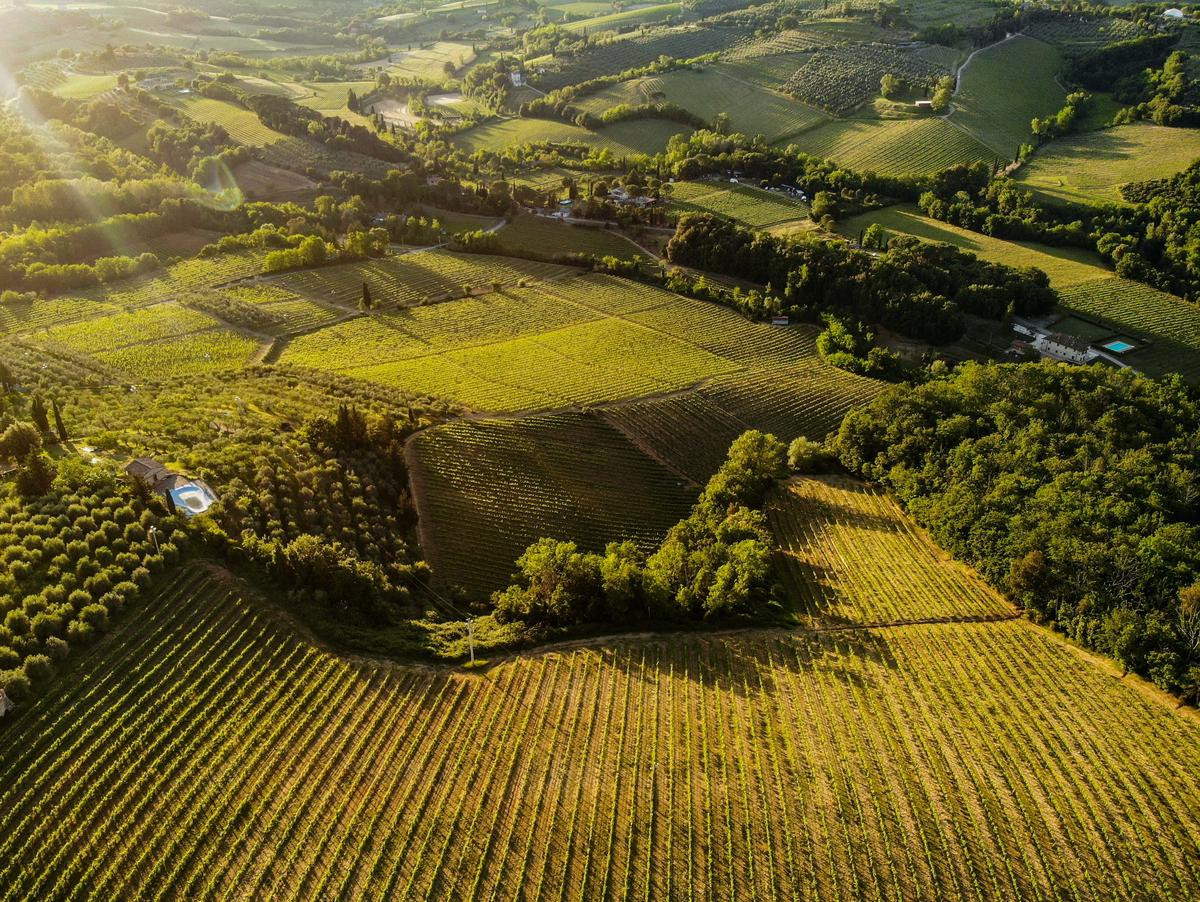
Economic Benefits and Challenges of Implementing Regenerative Farming
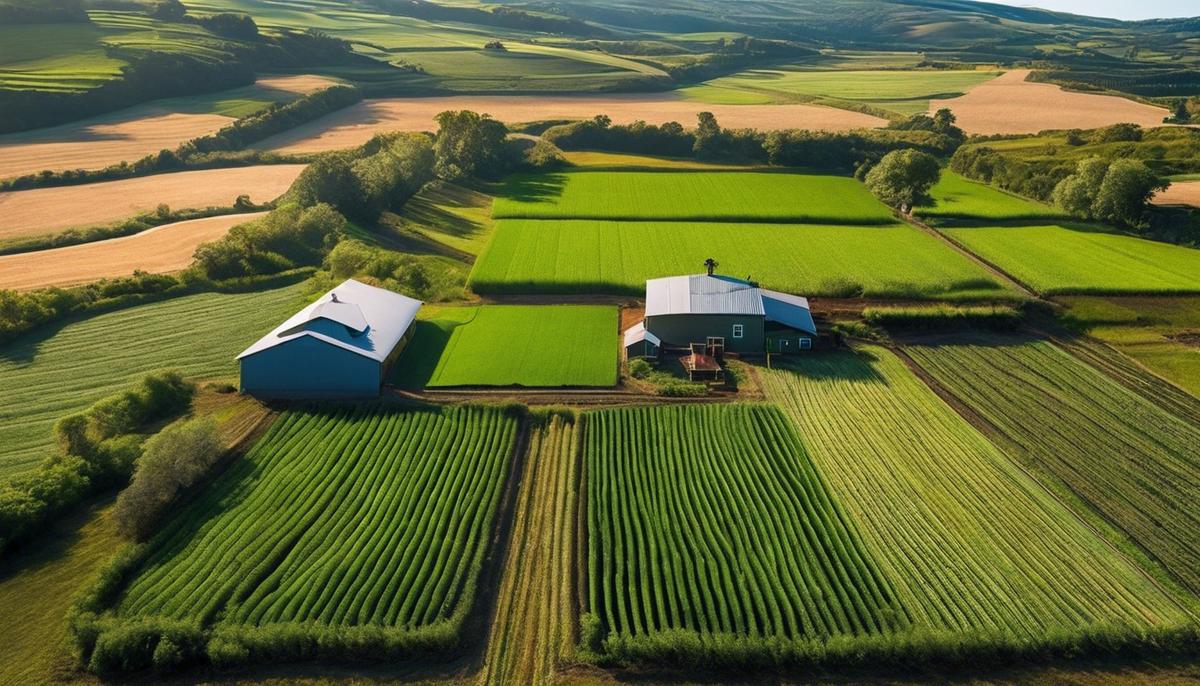
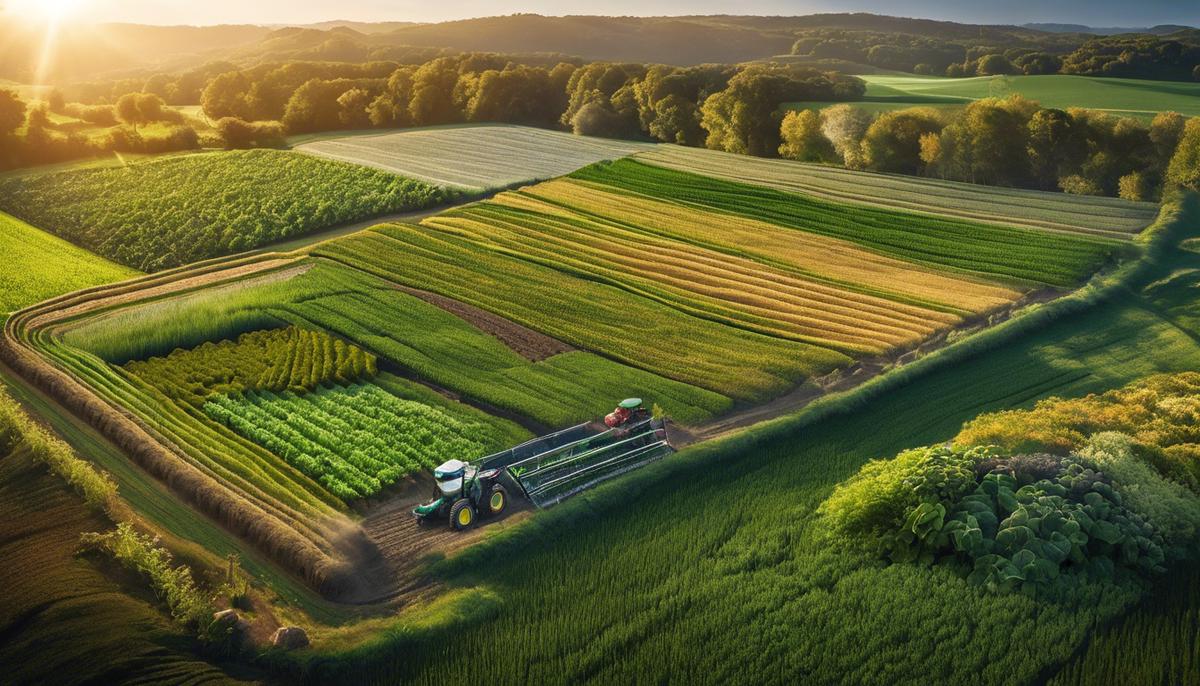
Fundamentals of Regenerative Farming

Ecological and Societal Impact of Regenerative Farming

Challenges and Future of Regenerative Farming
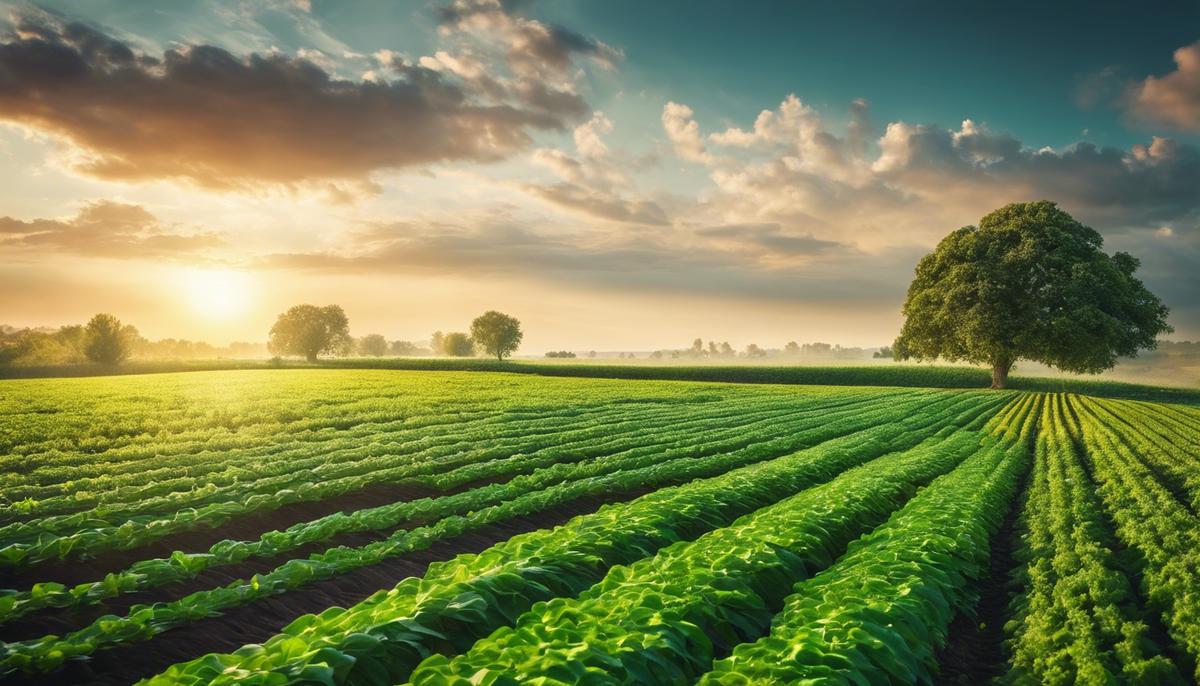
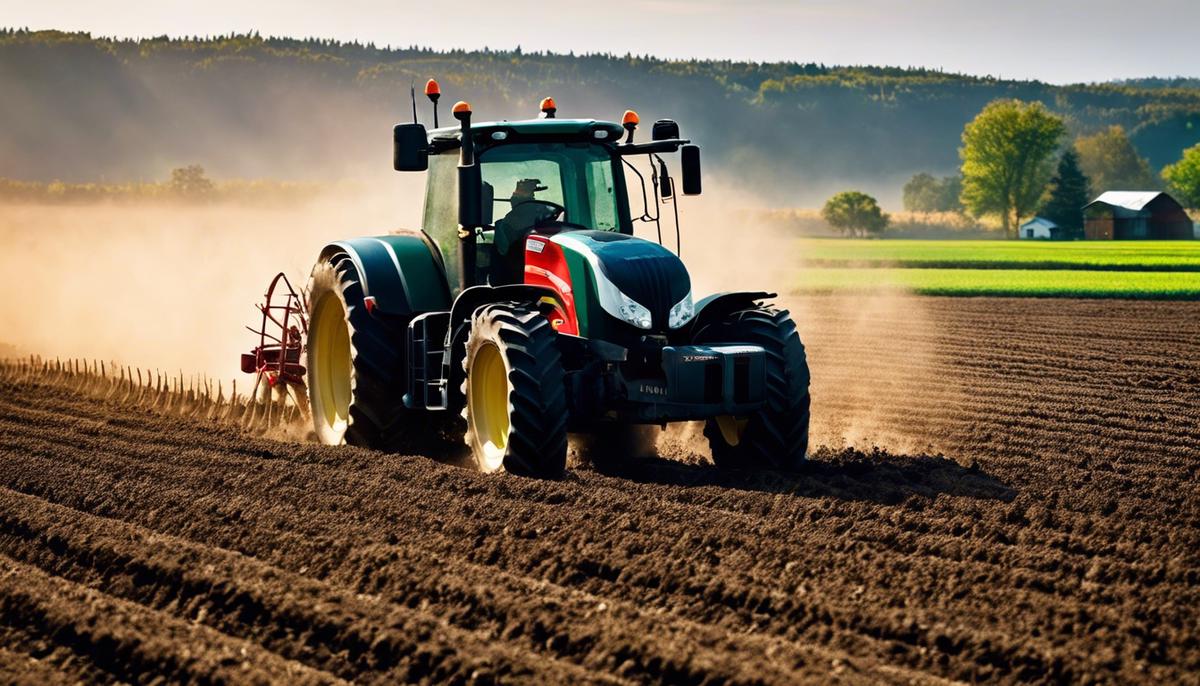
Principles and Practices of Regenerative Farming
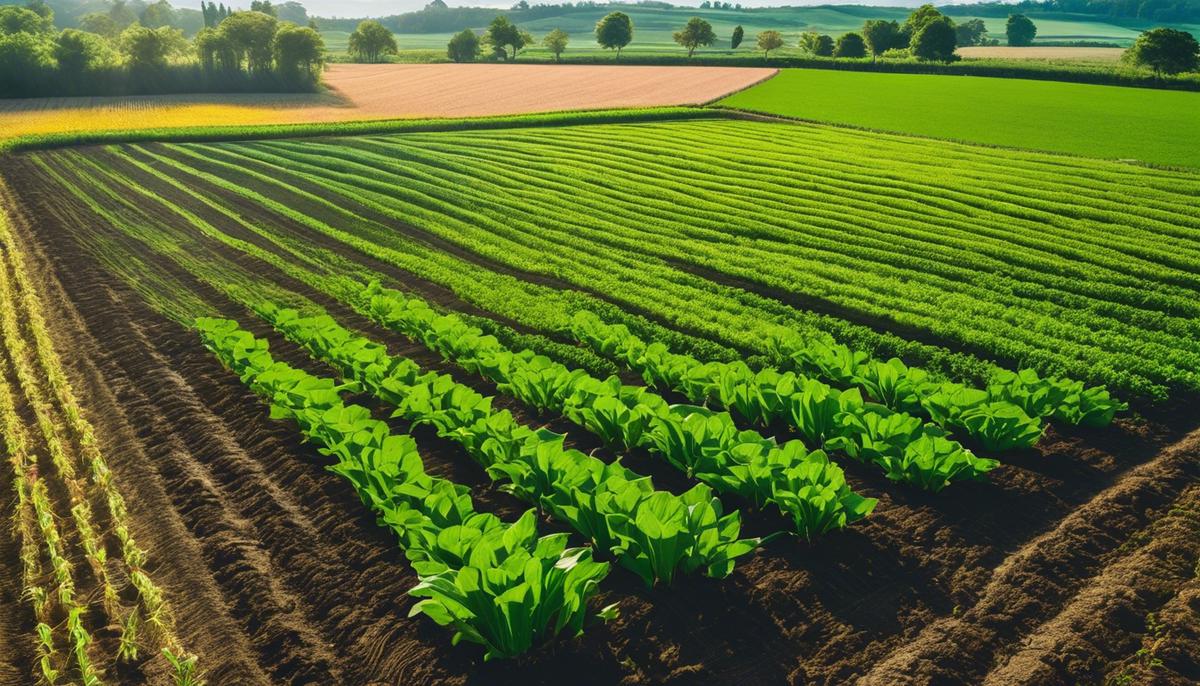
Socioeconomic and Environmental Impacts of Regenerative Farming
